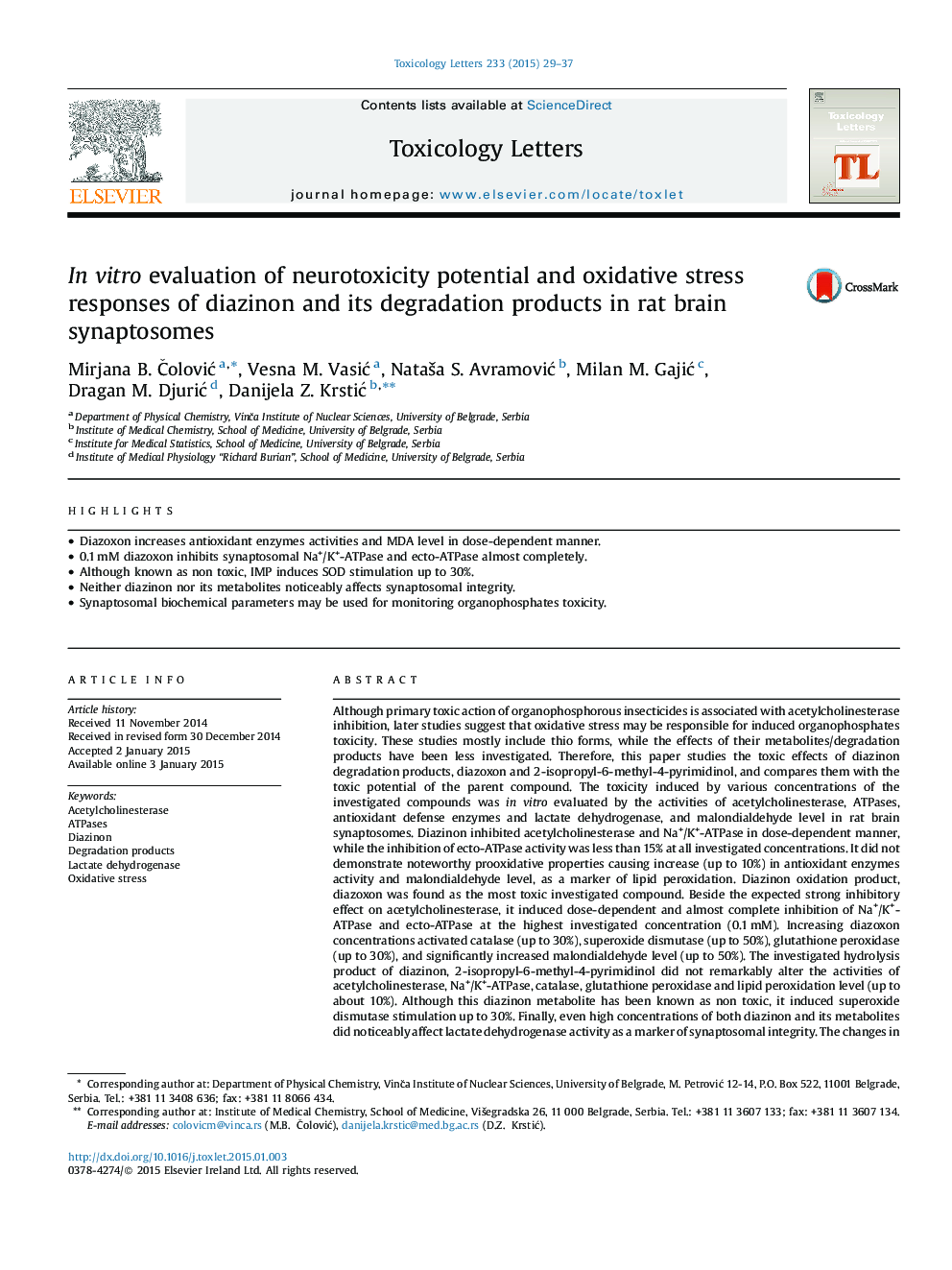| کد مقاله | کد نشریه | سال انتشار | مقاله انگلیسی | نسخه تمام متن |
|---|---|---|---|---|
| 2598904 | 1133163 | 2015 | 9 صفحه PDF | دانلود رایگان |
• Diazoxon increases antioxidant enzymes activities and MDA level in dose-dependent manner.
• 0.1 mM diazoxon inhibits synaptosomal Na+/K+-ATPase and ecto-ATPase almost completely.
• Although known as non toxic, IMP induces SOD stimulation up to 30%.
• Neither diazinon nor its metabolites noticeably affects synaptosomal integrity.
• Synaptosomal biochemical parameters may be used for monitoring organophosphates toxicity.
Although primary toxic action of organophosphorous insecticides is associated with acetylcholinesterase inhibition, later studies suggest that oxidative stress may be responsible for induced organophosphates toxicity. These studies mostly include thio forms, while the effects of their metabolites/degradation products have been less investigated. Therefore, this paper studies the toxic effects of diazinon degradation products, diazoxon and 2-isopropyl-6-methyl-4-pyrimidinol, and compares them with the toxic potential of the parent compound. The toxicity induced by various concentrations of the investigated compounds was in vitro evaluated by the activities of acetylcholinesterase, ATPases, antioxidant defense enzymes and lactate dehydrogenase, and malondialdehyde level in rat brain synaptosomes. Diazinon inhibited acetylcholinesterase and Na+/K+-ATPase in dose-dependent manner, while the inhibition of ecto-ATPase activity was less than 15% at all investigated concentrations. It did not demonstrate noteworthy prooxidative properties causing increase (up to 10%) in antioxidant enzymes activity and malondialdehyde level, as a marker of lipid peroxidation. Diazinon oxidation product, diazoxon was found as the most toxic investigated compound. Beside the expected strong inhibitory effect on acetylcholinesterase, it induced dose-dependent and almost complete inhibition of Na+/K+-ATPase and ecto-ATPase at the highest investigated concentration (0.1 mM). Increasing diazoxon concentrations activated catalase (up to 30%), superoxide dismutase (up to 50%), glutathione peroxidase (up to 30%), and significantly increased malondialdehyde level (up to 50%). The investigated hydrolysis product of diazinon, 2-isopropyl-6-methyl-4-pyrimidinol did not remarkably alter the activities of acetylcholinesterase, Na+/K+-ATPase, catalase, glutathione peroxidase and lipid peroxidation level (up to about 10%). Although this diazinon metabolite has been known as non toxic, it induced superoxide dismutase stimulation up to 30%. Finally, even high concentrations of both diazinon and its metabolites did noticeably affect lactate dehydrogenase activity as a marker of synaptosomal integrity. The changes in investigated biochemical parameters in rat brain synaptosomes could serve as indicators of toxicity due to the exposure to thio organophosphates and/or their break-down products.
Journal: Toxicology Letters - Volume 233, Issue 1, 17 February 2015, Pages 29–37
